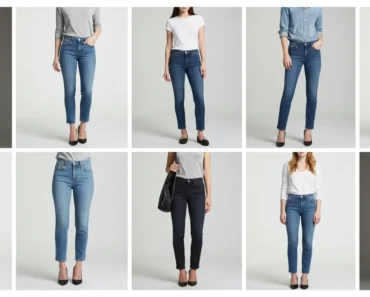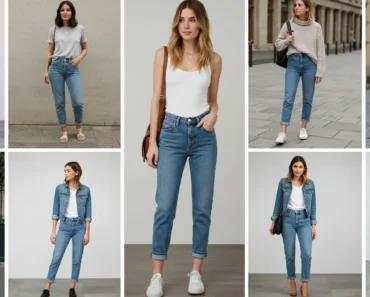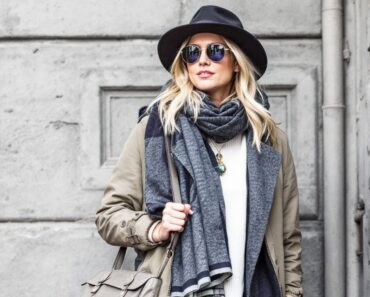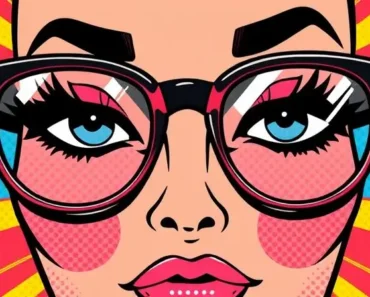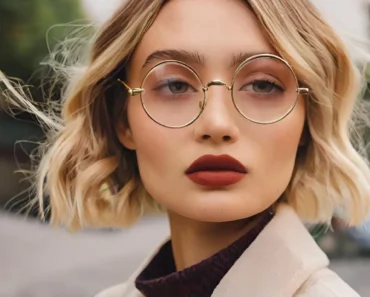Streetwear is more than a fashion movement—it’s a cultural force. By 2025, urban fashion will blend innovation, sustainability, and nostalgia to redefine what it means to dress for the streets. This year’s streetwear trends focus on pushing boundaries while staying rooted in the core elements of self-expression and functionality. Whether you’re a longtime enthusiast or new to the scene, here’s your guide to the styles, materials, and attitudes shaping urban fashion in 2025.
The Evolution of Streetwear: From Subculture to Global Phenomenon
Streetwear began in the 1980s as a rebellion against mainstream fashion. Skate parks, hip-hop, and graffiti art inspired bold graphics, oversized fits, and a DIY ethos. Fast forward to 2025, and streetwear has become a $200 billion industry. Brands like Supreme, BAPE, and Stüssy laid the groundwork, but today’s trends are driven by fresh voices and global influences.
Why 2025 Matters
2025 marks a shift toward responsible creativity. Consumers demand transparency, sustainability, and inclusivity. The fusion of tech and tradition is redefining fabrics, designs, and retail experiences. Let’s break down the key trends you need to know.
Key Streetwear Trends for 2025
As we look specifically at 2025, several distinct themes emerge. These streetwear trends build upon recent developments but push them in new directions. They reflect a balance between looking back and pushing forward, prioritizing both individual expression and collective consciousness.
Trend 1: Neo-Tech Utility & Gorpcore Evolution
The fascination with functional, outdoor-inspired gear, often dubbed “Gorpcore” (an acronym for “Good Ol’ Raisins and Peanuts,” referencing trail mix), is not new. However, for 2025, this trend evolves beyond literal hiking attire into something more refined, integrated, and technologically advanced – we can call it Neo-Tech Utility. It is less about cosplaying as a mountaineer and more about appreciating advanced materials, practical design, and a rugged aesthetic adapted for the urban environment.
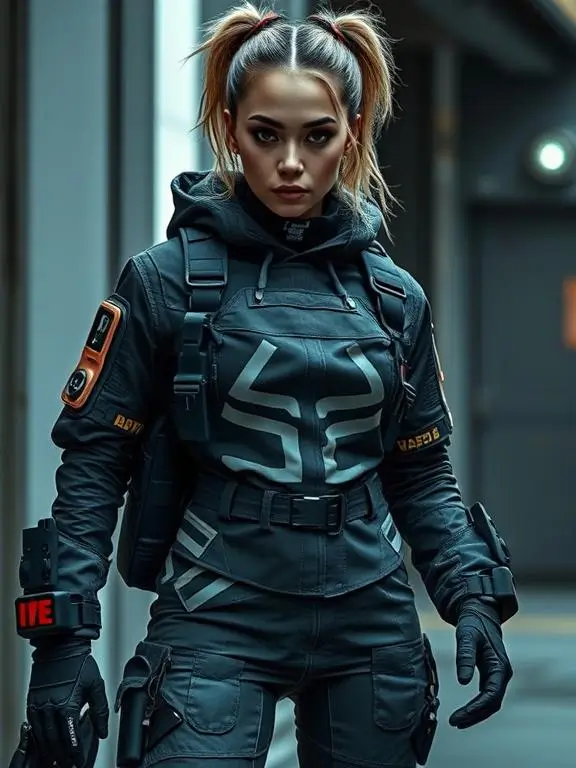
Defining Gorpcore’s Next Phase
The next phase of Gorpcore moves away from purely functional, often bulky silhouettes towards pieces that blend technical performance with sleeker design. Think waterproof breathable fabrics used in city-appropriate jackets, cargo pants with innovative pocket placements and cleaner lines, and accessories that merge utility with a modern look. The focus is on versatility – garments that perform well in unpredictable weather but also look sharp in a coffee shop or navigating public transport. This evolution reflects a desire for clothing that is resilient, adaptable, and subtly signals an appreciation for performance technology without sacrificing style. It acknowledges the reality of urban life, where practicality and protection from the elements are valuable, but blends it with contemporary fashion sensibilities.

Key Pieces
-
Technical Shell Jackets: Lightweight, waterproof, and breathable jackets remain central. Look for refined cuts, interesting seam details, packable designs, and subtle branding. Colors might range from classic black and olive to more muted pastels or even translucent materials.
-
Evolved Cargo Pants: Cargo pants continue their reign but move towards more sophisticated silhouettes. Expect variations like slimmer fits, wide-leg cuts in technical fabrics, convertible designs (zip-off shorts), and unique pocket configurations that feel intentional rather than purely utilitarian. Materials might include durable ripstop nylon, water-repellent cotton blends, or even lightweight wools with technical treatments.
-
Multi-Pocket Vests & Harnesses: Utility vests provide layering options and functional storage. 2025 sees lighter, more streamlined versions, sometimes integrated into jackets or worn as standalone statement pieces. Small chest rigs or harness-style bags also fit this trend, offering hands-free carrying capacity.
-
Functional Bags: Crossbody bags, durable backpacks with laptop compartments and weatherproofing, and modular pouch systems continue to be essential. Look for robust materials like CORDURA® or X-Pac, waterproof zippers, and ergonomic designs.
-
Hybrid Footwear: Trail running sneakers, technical sandals with robust straps, and waterproof boot styles adapted for city wear are key. Comfort, durability, and weather resistance are paramount.
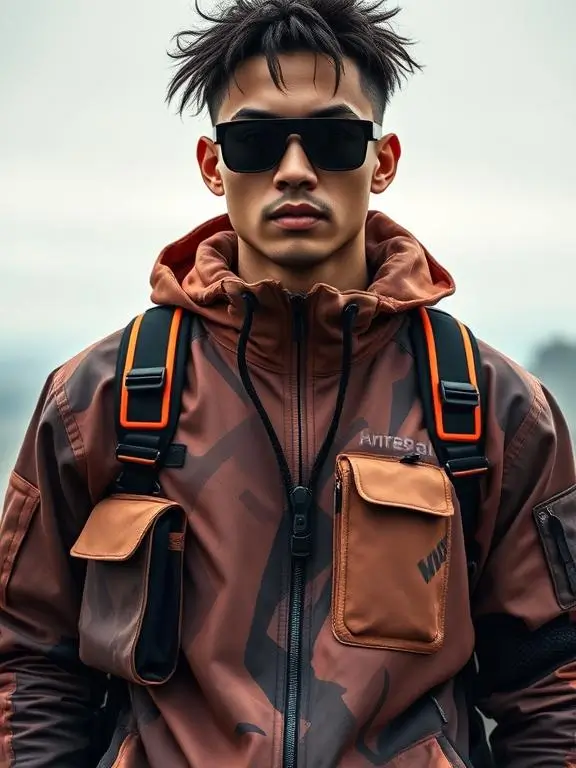
Materials & Colors
Performance fabrics are the cornerstone. Gore-Tex and similar waterproof-breathable membranes remain popular, alongside advanced synthetics offering stretch, moisture-wicking, and durability. Recycled nylons and polyesters gain prominence, aligning with sustainability goals. Color palettes mix earthy, nature-inspired tones (olive, stone, beige, charcoal) with functional black and navy. Pops of high-visibility brights (neon green, safety orange, electric blue) appear as accents on zippers, drawcords, or inner linings, adding a techy, modern edge without overwhelming the garment. There is also an exploration of textures – crinkled nylons, subtle ripstop grids, and matte finishes contrast with smoother technical surfaces.
Styling Tips
Integrate Neo-Tech Utility pieces thoughtfully. Pair a technical shell jacket with refined knitwear and tailored trousers for a high-low mix. Wear evolved cargo pants with a simple, high-quality tee and clean sneakers. Use a utility vest as a layering piece over a hoodie or even a button-down shirt. The key is balance – avoid looking like you are genuinely about to summit Everest unless that is the specific, intentional look you seek. Ground the technical pieces with more classic or refined items to make the trend feel wearable and contemporary within an urban context.
Trend 2: Refined & Elevated Basics
While logos and bold graphics have long defined streetwear, 2025 sees a strong counter-movement towards refined, elevated basics. This trend prioritizes silhouette, material quality, and subtle details over overt branding. It is about investing in high-quality, versatile pieces that form the foundation of a sophisticated urban wardrobe. This signifies a maturing of streetwear aesthetics, where confidence comes from the cut and feel of the garment rather than the logo emblazoned upon it.
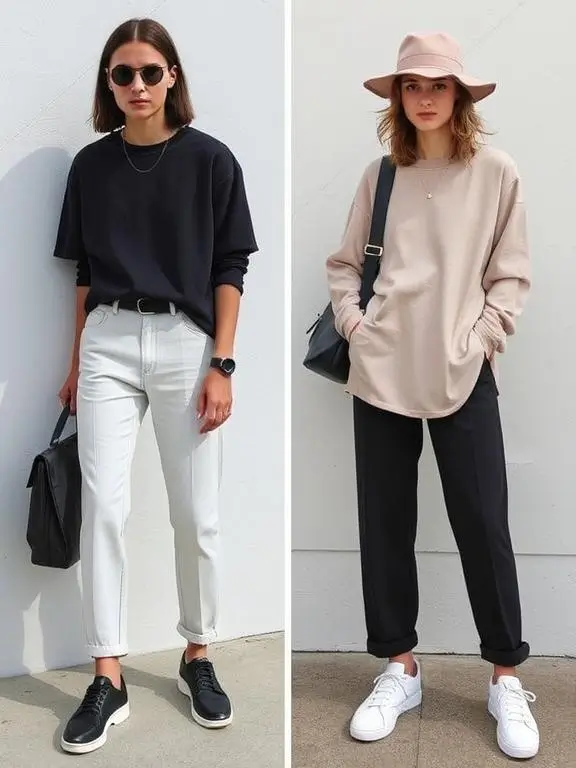
Moving Beyond Logos
Logo fatigue is real. After years of logomania dominating streetwear trends, many consumers and designers are shifting focus. This does not mean logos disappear entirely, but they become smaller, more discreet, or are replaced by other brand signifiers like unique hardware, specific construction techniques, or signature silhouettes. The emphasis shifts to the intrinsic quality and design of the garment itself. This approach offers longevity, as heavily branded items can feel dated quickly, while well-made basics endure. It also allows for greater personal expression, as the focus is on how pieces are combined rather than which brand is being worn.
Also Read: Foolproof Travel Outfits: The Ultimate 2025 Guide for Comfort, Style, and Versatility
Focus on Silhouette & Material Quality
The core of this trend lies in perfecting the essentials. Hoodies feature considered cuts – perhaps slightly oversized but with shaped sleeves, or boxy yet cropped. Sweatpants might have a gentle taper or a clean wide-leg drape. T-shirts focus on the perfect weight and neckline. The choice of materials is paramount. Expect to see heavy loopback cotton fleece, cashmere blends, merino wool, substantial jersey knits, and premium denim. These materials not only feel better but also hang and wear better, contributing to a more polished overall appearance. Tailoring techniques might even influence casual wear, with darts, pleats, or structured shoulders appearing on unexpected items like sweatshirts or track jackets.

Key Pieces
-
Premium Hoodies & Sweatshirts: Look for substantial fabrics, well-executed details like ribbed cuffs and waistbands, unique seam constructions, and versatile fits (from tailored to relaxed).
-
Elevated Sweatpants & Joggers: Materials like French terry, wool blends, or technical fabrics elevate the humble sweatpant. Details like pintucks, clean waistbands (sometimes elasticated only at the back), and refined ankle finishes make them suitable for more than just lounging.
-
Perfect-Fit T-Shirts: High-quality cotton (like Supima or organic) in various weights and fits (slim, regular, boxy). The focus is on finding the ideal shape and feel.
-
Minimalist Knitwear: Crewnecks, turtlenecks, and cardigans in fine merino wool, cashmere blends, or textured cotton knits provide sophisticated layering options.
-
Tailored Trousers (Relaxed): Worn as an alternative to jeans or sweatpants, trousers in fabrics like wool, Tencel, or cotton twill offer a smarter edge. Look for relaxed fits, pleated fronts, or elasticated waistbands for comfort.
-
Clean Outerwear: Minimalist bomber jackets, coach jackets, Harrington jackets, or simple mac coats in quality materials provide versatile top layers.
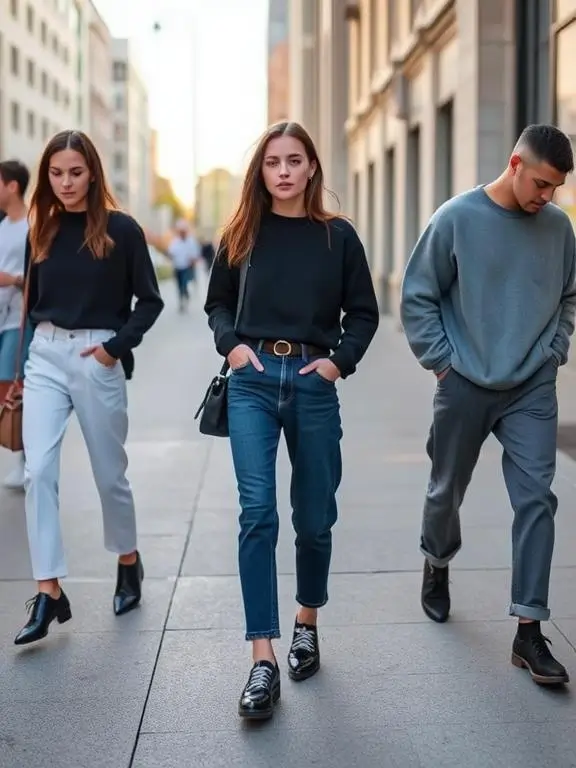
Color Palette
Neutrals form the backbone of this trend: black, white, various shades of grey, beige, navy, and olive. Monochrome dressing (wearing different shades of the same color) is a key styling technique. Soft, sophisticated pastels (dusty pink, sage green, pale blue) or rich jewel tones (burgundy, deep teal) might appear, but the overall feel is understated and cohesive. The focus is on tonal harmony and letting the quality of the materials and the precision of the cut speak for themselves.
Trend 3: Y2K & Retro Futurism Remix
Nostalgia remains a powerful engine in fashion, and the early 2000s (Y2K) continue to influence streetwear trends for 2025. However, it is not a simple carbon copy of the past. Instead, it is a remixed version, blending Y2K aesthetics with elements of retro-futurism – envisioning the future from a past perspective, often with a slightly kitsch or optimistic technological feel. This creates a unique blend of familiar comfort and forward-looking experimentation.
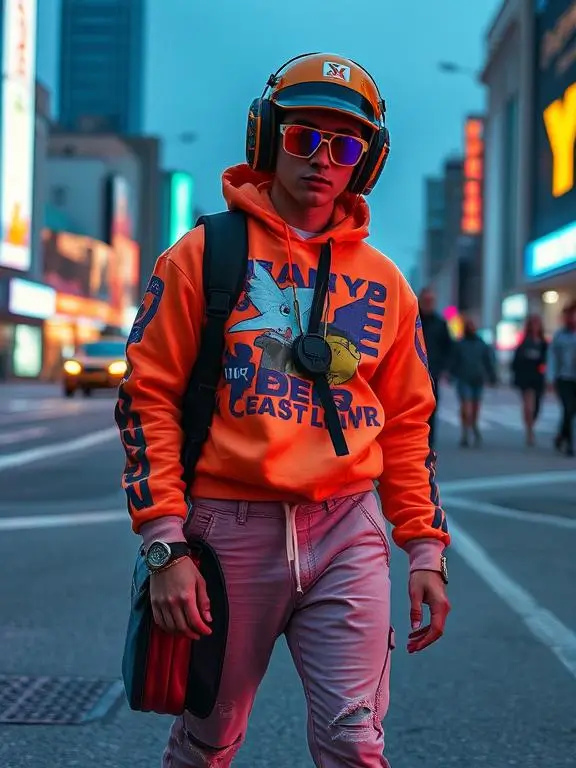
Nostalgia with a Twist
The Y2K elements resurfacing include baggy silhouettes (especially in denim and track pants), baby tees, low-rise waistlines (though often styled in a more modern context, perhaps layered), velour tracksuits, and certain graphic styles. The “twist” comes from integrating these with cleaner lines, better quality materials than typically found in the original era, and mixing them with contemporary pieces. The retro-futurism aspect draws from late 90s and early 00s visions of technology and the digital age – think iridescent fabrics, metallic finishes, cyber-inspired graphics, sleek wrap-around sunglasses, and chunky, techy sneaker designs. It is optimistic, sometimes playful, and a little bit utopian in its outlook.
Key Pieces
-
Baggy Jeans: Loose, pooling denim is central. Look for various washes, from light blue to raw indigo, sometimes with distressed details or cargo pockets. Low-rise options return, but mid-rise baggy fits offer easier wearability.
-
Tracksuits: Matching track jackets and pants, often in velour, nylon, or polyester. Look for updated color blocking, piping details, or slightly more refined fits compared to the originals.
-
Baby Tees & Cropped Tops: Shrunken t-shirts, often with playful graphics or logos, remain popular, styled with lower-rise bottoms or layered under jackets.
-
Metallic & Iridescent Fabrics: Skirts, trousers, jackets, and accessories featuring shiny, color-shifting, or high-gloss finishes add a futuristic touch.
-
Mesh & Sheer Layers: Mesh tops, dresses, or panels incorporated into garments provide texture and a hint of early 00s clubwear aesthetic, often layered over or under other pieces.
-
Futuristic Sunglasses: Wrap-around styles, shield sunglasses, rimless designs, and lenses in unconventional colors (like yellow or light blue) are key accessories.
-
Chunky Sneakers: Footwear continues the Y2K theme with bulky silhouettes, often featuring metallic accents, complex paneling, and visible tech elements (like gel cushioning).
Graphics & Prints
Graphics lean into the retro-futuristic theme. Expect cyber-dots, digital glitch patterns, airbrushed effects reminiscent of early computer graphics, and optimistic, tech-utopian motifs. Retro logos from the era (reissued or reimagined) are also prevalent. Bold, abstract patterns and colorful gradients add to the vibrant, experimental feel. Text-based graphics might feature futuristic fonts or optimistic slogans.
The Modern Interpretation
Crucially, this trend is about interpretation, not replication. Styling is key. A pair of baggy Y2K jeans might be paired with a refined knit top from Trend 2. A velour tracksuit might be worn with sleek, modern sneakers. The proportions are often adjusted – perhaps a cropped top balanced with a higher waistline than strictly accurate Y2K, or baggy jeans styled with a more fitted jacket. The quality of materials is generally higher, preventing the look from feeling like a costume. It is about selectively referencing the era while filtering it through a contemporary lens, creating outfits that feel both familiar and fresh.
Trend 4: Sustainable & Conscious Choices
Sustainability has moved from a niche consideration to a mainstream expectation within streetwear trends. For 2025, this deepens, influencing not just materials but also production processes, brand transparency, and consumer behavior. It is less of a distinct aesthetic trend and more of an underlying principle shaping all aspects of streetwear. Brands that ignore this shift risk losing relevance, particularly with environmentally and socially conscious younger consumers.
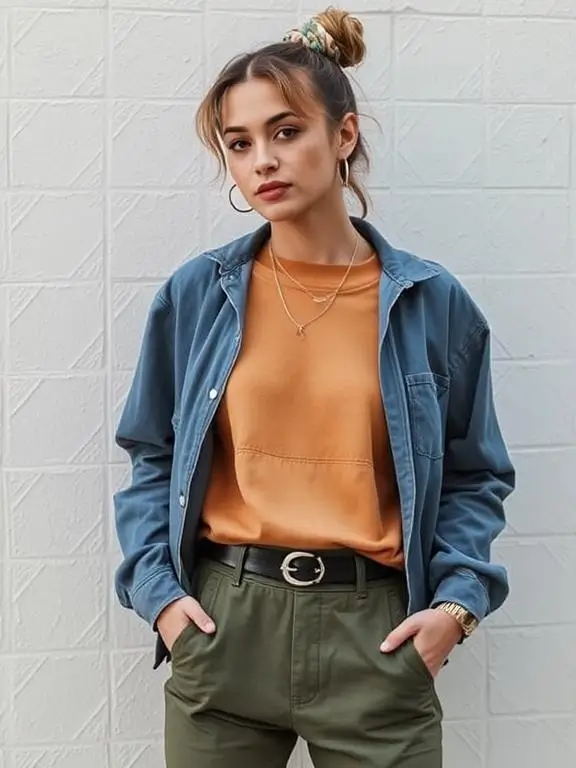
The Rise of Eco-Streetwear
Eco-streetwear emphasizes minimizing environmental impact and promoting ethical practices. This manifests in several ways: increased use of recycled materials (like polyester from plastic bottles or regenerated nylon from fishing nets), adoption of organic cotton (grown without synthetic pesticides), exploration of innovative low-impact materials (like Tencel™/Lyocell from wood pulp, fabrics made from algae or mushroom leather alternatives), and a focus on water-saving dyeing techniques. Durability and longevity also become aspects of sustainability – buying better quality items that last longer reduces overall consumption and waste.
Key Materials
-
Recycled Polyester & Nylon: Increasingly common in outerwear, bags, and even some knits. Quality has improved significantly, offering performance comparable to virgin synthetics.
-
Organic Cotton: Used widely for tees, hoodies, and sweats. Reduces water pollution and soil degradation compared to conventional cotton.
-
Tencel™/Lyocell: Soft, breathable, and biodegradable fibers made from responsibly sourced wood pulp in a closed-loop process. Used for tees, shirts, and flowy trousers.
-
Hemp & Linen: Durable natural fibers requiring less water and pesticides than cotton. Offer unique textures and breathability.
-
Innovative Bio-Materials: Emerging alternatives like leather made from mushrooms (mycelium), cacti, or pineapple leaves (Piñatex®), and fabrics derived from algae or food waste, signal future directions.
-
Deadstock Fabrics: Using leftover fabrics from larger production runs to create limited-edition pieces, reducing waste.
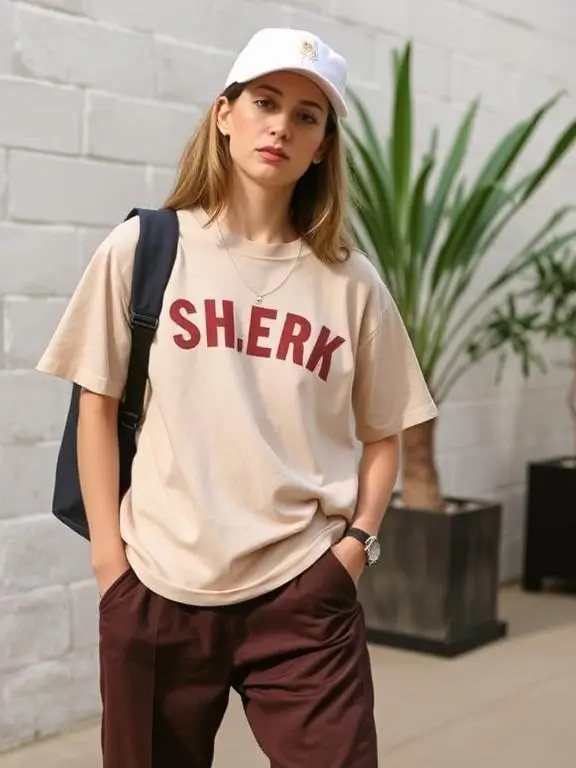
Brand Examples & Initiatives
While avoiding overt promotion, it’s important to note the types of initiatives gaining traction. Brands gain credibility through:
-
Transparency: Clearly communicating where and how garments are made, including factory information and material sourcing. Certifications (like GOTS for organic cotton, Fair Trade, B Corp) help validate claims.
-
Circular Programs: Implementing take-back schemes for old garments to be recycled or repaired. Designing clothes for disassembly and recycling.
-
Upcycling & Repair: Offering repair services to extend garment life. Creating unique pieces from pre-existing clothing or materials (upcycling).
-
Reduced Water & Chemical Use: Employing dyeing and finishing processes that consume less water and avoid harmful chemicals.
How Consumers Drive the Trend
Consumers are increasingly informed and vocal. They use purchasing power to support brands aligning with their values. Social media amplifies calls for accountability. The secondhand market (thrifting, resale platforms) boom is also linked to sustainability, offering an alternative to buying new. This consumer demand pushes the industry forward, making sustainable practices not just ethical imperatives but also commercial necessities for brands wanting to connect with the 2025 streetwear audience. Choosing sustainable options becomes a form of personal expression and value signaling.
Trend 5: Artistic Expression & Bold Graphics
While refined basics gain ground, streetwear’s roots in graphic expression remain strong. For 2025, this evolves beyond simple logo placements into more artistic and narrative forms. Bold graphics, illustrations, and collaborations with artists become key ways for brands and individuals to make unique statements. This trend celebrates creativity, individuality, and the power of visual storytelling through clothing.
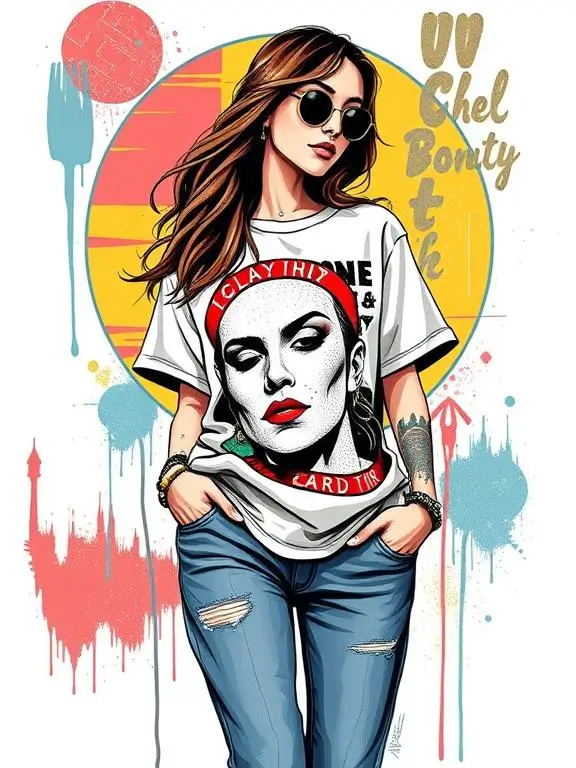
Beyond the Logo Tee
The focus shifts from brand identification via a logo to conveying a message, mood, or aesthetic through more complex visuals. This could involve large-scale photographic prints, intricate illustrations, abstract patterns, or text used as a design element. The placement is also more experimental – graphics might wrap around the body, appear on sleeves, legs, or be integrated into the fabric pattern itself, rather than just centered on the chest. It is about using the garment as a canvas.
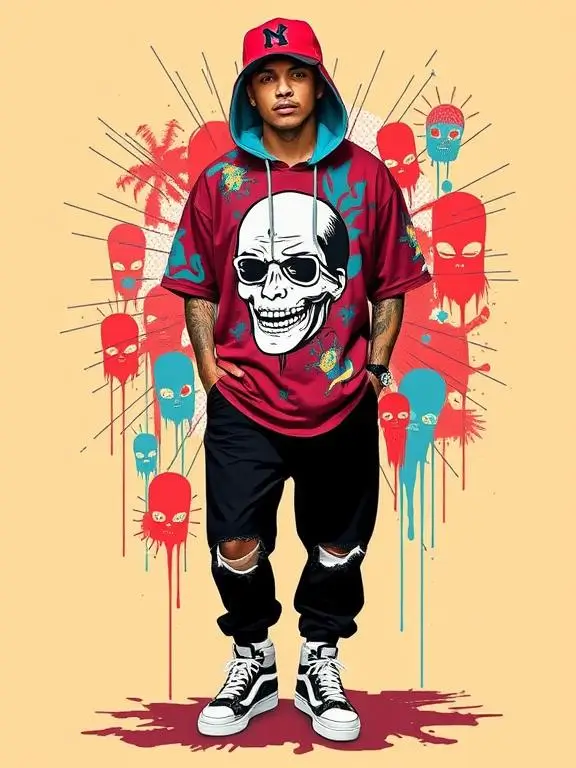
Collaboration with Artists
Streetwear brands increasingly partner with contemporary artists, illustrators, photographers, and graphic designers to create limited-edition pieces or collections. This brings fresh perspectives and authentic artistic credibility. These collaborations often become highly sought after, bridging the gap between the art world and fashion. The artwork is the primary focus, with branding often taking a secondary role. This trend highlights streetwear’s connection to broader creative cultures.
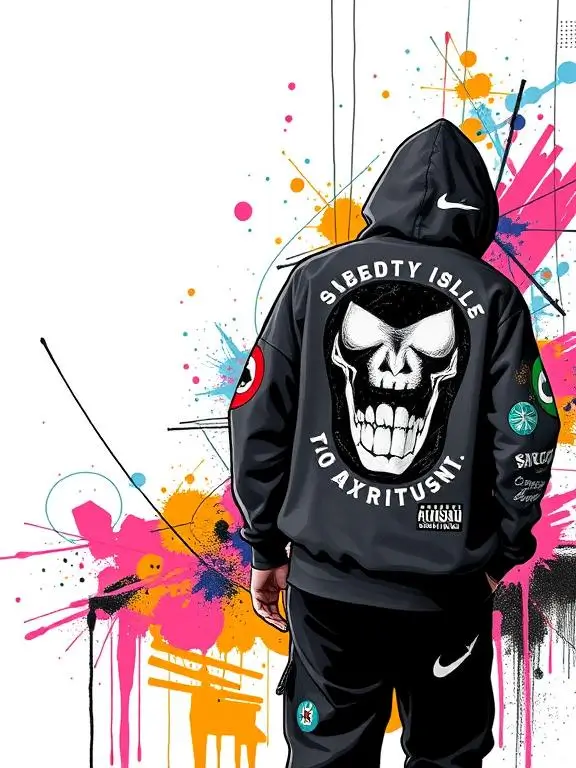
Key Pieces
-
Statement Outerwear: Jackets (bombers, denim jackets, coach jackets) featuring large back prints, all-over patterns, or embroidered artwork.
-
Graphic Knitwear: Sweaters and cardigans incorporating patterns, illustrations, or abstract designs directly into the knit (intarsia or jacquard techniques).
-
Printed Trousers & Shorts: Pants or shorts featuring bold all-over prints, photographic images, or artistic motifs.
-
Artistic Tees & Hoodies: While the canvas is familiar, the graphics are more elaborate – detailed illustrations, painterly effects, photo collages, or conceptual text.
-
Unique Accessories: Bags, scarves, hats, or even sneakers featuring artist-designed prints or unique graphic treatments.
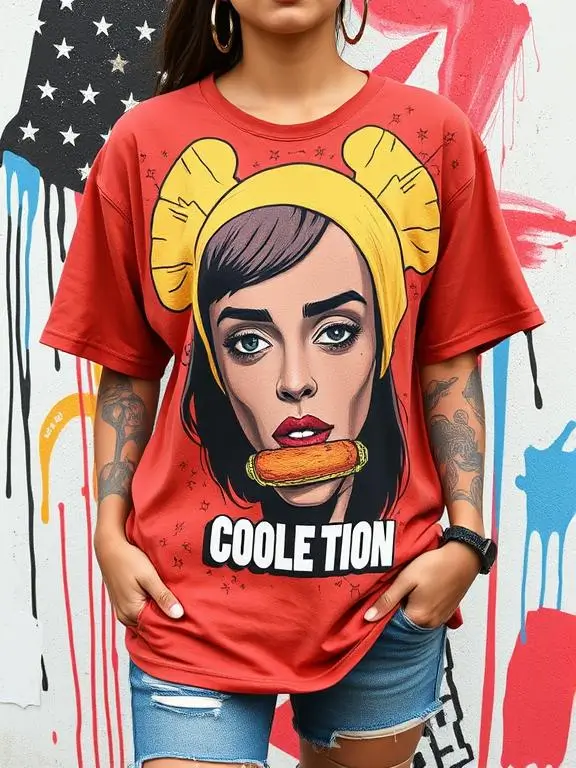
Themes & Motifs
Themes are diverse, reflecting the wide range of artistic styles. Expect abstract and geometric patterns, nature-inspired illustrations (florals, animals, landscapes), surreal or dreamlike imagery, figurative drawings, bold typographic statements, and designs referencing digital art or subcultures. The common thread is a departure from purely commercial branding towards more personal or culturally resonant visual expression. Color palettes can range from monochrome line art to vibrant, multi-hued explosions, depending on the artistic style.
Trend 6: Footwear Focus: Innovation & Classics Reimagined
Sneakers remain the bedrock of streetwear culture, but the footwear landscape in 2025 is diverse and dynamic. It balances technological innovation, the enduring appeal of retro silhouettes, and the growing acceptance of non-sneaker styles within the urban fashion context. Footwear choices are crucial in defining an overall look, often acting as the focal point or the grounding element of an outfit.
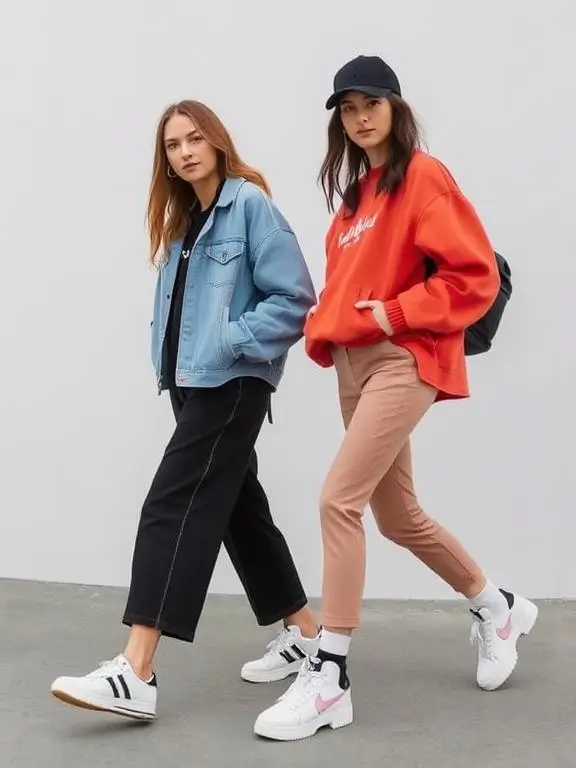
The Enduring Power of Sneakers
Sneakers continue to dominate. Limited-edition drops (“hype” releases) and collaborations still generate significant buzz, but there’s also a strong appreciation for general release models that offer good design and comfort. The resale market remains active, influencing desirability and trends. Brand loyalty is strong, but consumers are also open to exploring different brands and styles. Comfort, versatility, and aesthetic appeal are key drivers.
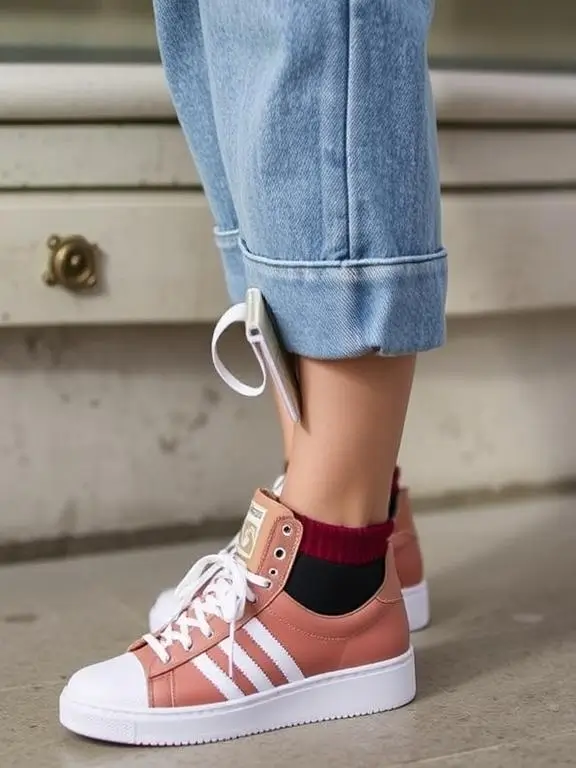
Tech Advancements
Innovation plays a significant role. Brands continue to push boundaries with:
-
Cushioning Systems: New foams and air technologies promise enhanced comfort and energy return. Visible tech remains a popular design element.
-
Sustainable Materials: Increased use of recycled materials, bio-based soles, and eco-friendly manufacturing processes in sneaker construction.
-
Lightweight Construction: Utilizing advanced synthetics, engineered meshes, and innovative assembly techniques to create lighter, more breathable footwear.
-
3D Printing & Customization: While still evolving, personalized fits and unique design possibilities through additive manufacturing are on the horizon.
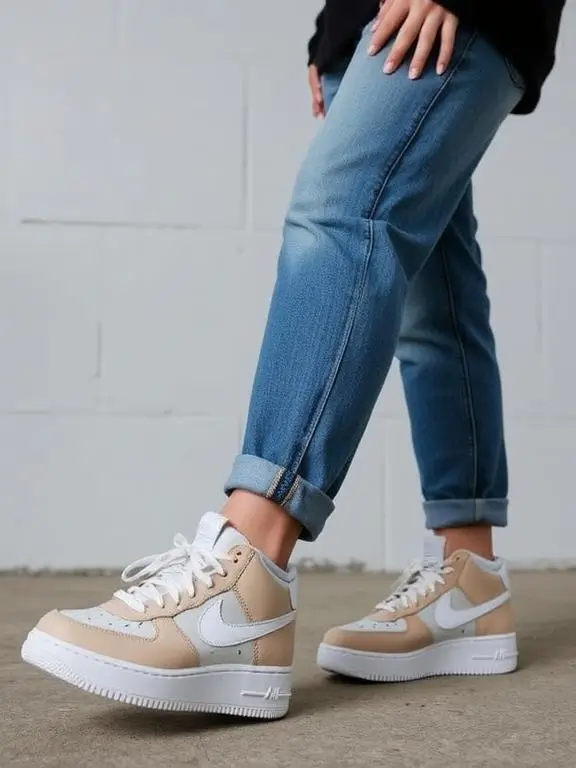
Retro Runners & Basketball Silhouettes
Nostalgia heavily influences sneaker trends. Retro running shoes from the 70s, 80s, and 90s remain incredibly popular, prized for their classic designs, comfort, and cultural resonance. Simple, low-profile runners coexist with chunkier, more techy designs from the later decades. Similarly, classic basketball silhouettes (like the Air Jordan 1, Nike Dunk, Adidas Forum) maintain their iconic status, constantly reinterpreted through new colorways and collaborations. The appeal lies in their timeless design and deep roots in streetwear history.
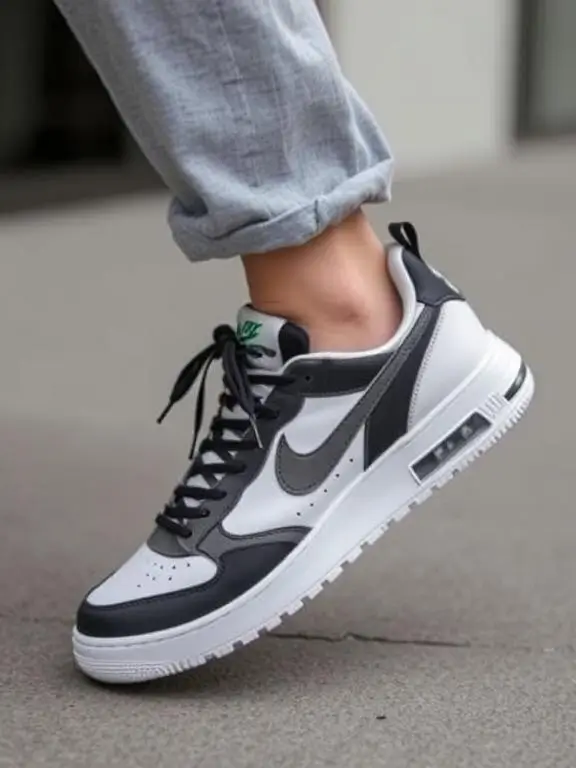
Beyond Sneakers
Streetwear’s footwear repertoire expands beyond sneakers in 2025.
-
Clogs & Mules: Comfortable, easy-to-wear slip-on styles gain further traction. Brands known for clogs (like Birkenstock) see continued popularity, while fashion and streetwear labels offer their own interpretations, often with unique materials or chunkier soles.
-
Technical Sandals: Functional sandals with multiple straps, robust soles, and technical materials (inspired by brands like Suicoke or Teva) become acceptable warm-weather alternatives, fitting the Neo-Tech Utility trend.
-
Modernized Boots: Chelsea boots with chunkier soles, refined combat boots, or weather-resistant styles offer alternatives for colder weather or a slightly smarter look, often featuring streetwear-aligned details like exaggerated lugs or technical materials.
-
Loafers & Derbies (with a twist): Even classic shoe styles get a streetwear interpretation, often through chunkier soles, unexpected materials, or relaxed styling (worn with baggy trousers and hoodies).
Trend 7: Accessorizing with Intent
Accessories are no longer afterthoughts in streetwear; they are integral components used to complete looks, add personality, and enhance functionality. For 2025, accessorizing is done with intention, whether for practical purposes, stylistic statements, or both. The right accessories can elevate an outfit, tie different elements together, and signal adherence to specific streetwear trends.
Functional Bags
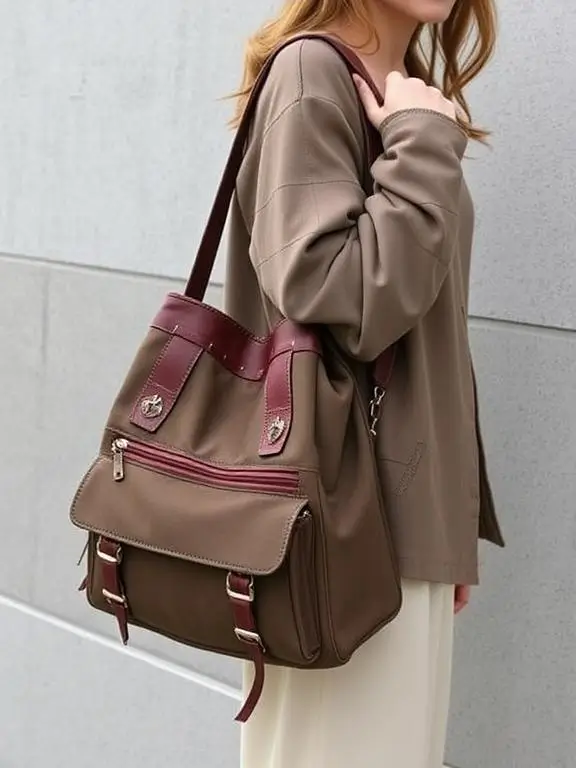
Bags prioritize both style and utility.
-
Crossbody Bags: Remain ubiquitous, offered in various sizes from small phone holders to larger options capable of carrying daily essentials. Technical fabrics, multiple compartments, and adjustable straps are common features.
-
Utility Vests/Chest Rigs: Double as accessories, providing storage and adding a layer of visual interest, tying into the Neo-Tech Utility trend.
-
Tote Bags: Simple canvas totes remain popular for casual use, often featuring graphics or logos. More structured totes in durable materials like nylon or leather offer a slightly elevated option.
-
Mini Backpacks & Sling Bags: Offer alternatives to crossbody styles, providing different carrying options and silhouettes.
-
Modular Systems: Bags with detachable pouches or the ability to attach smaller accessories offer customization and adaptability.
Headwear Variations
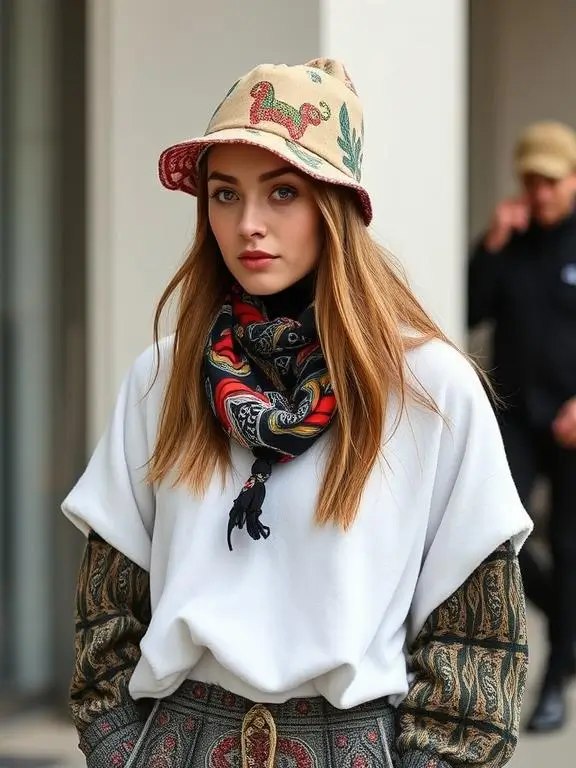
Headwear provides a key finishing touch and opportunity for expression.
-
Bucket Hats: Continue their popularity, appearing in various fabrics (canvas, nylon, corduroy, fleece) and brim widths. Reversible options add versatility.
-
Evolved Beanies: Classic beanies remain staples, but look for variations in knit texture (ribbed, waffle), fit (slouchy vs. fisherman), and subtle branding or patches.
-
Technical Caps: Baseball caps made from performance fabrics (water-repellent, breathable) with minimal branding align with the Neo-Tech Utility look. Five-panel caps also remain popular.
-
Trucker Hats: Experience a resurgence, tying into the Y2K/Retro trend, often featuring bold logos or graphics on the front foam panel.
Jewelry & Eyewear
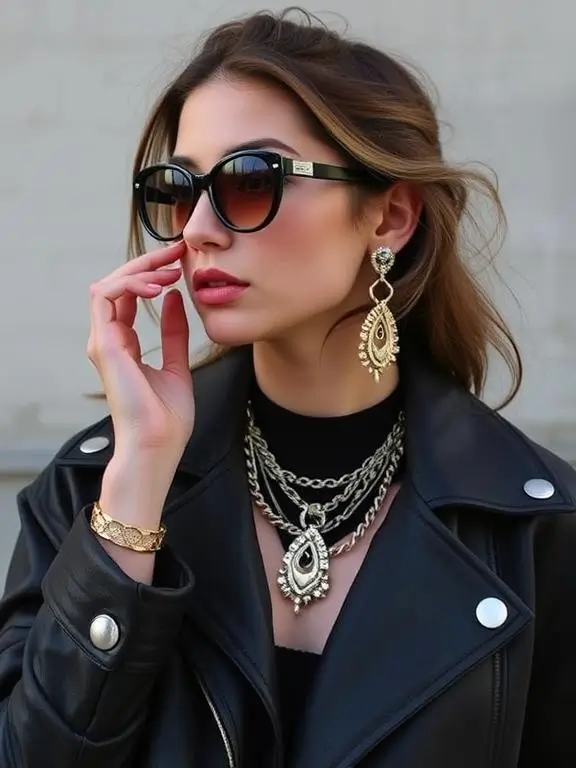
Jewelry and eyewear add personality and polish.
-
Statement Jewelry: Chunky chains (silver or gold-tone), signet rings, pendant necklaces, and single earrings allow for personal expression. Layering multiple subtle pieces is also common. Materials range from precious metals to stainless steel and acrylics.
-
Futuristic & Retro Eyewear: As mentioned in Trend 3, sunglasses are key. Wrap-around, shield, and sharp geometric shapes provide a futuristic edge. Classic shapes like Wayfarers or Aviators endure, sometimes updated with colored lenses or thicker frames. Clear or lightly tinted lenses worn indoors or at night persist as a style statement.
Socks as a Statement
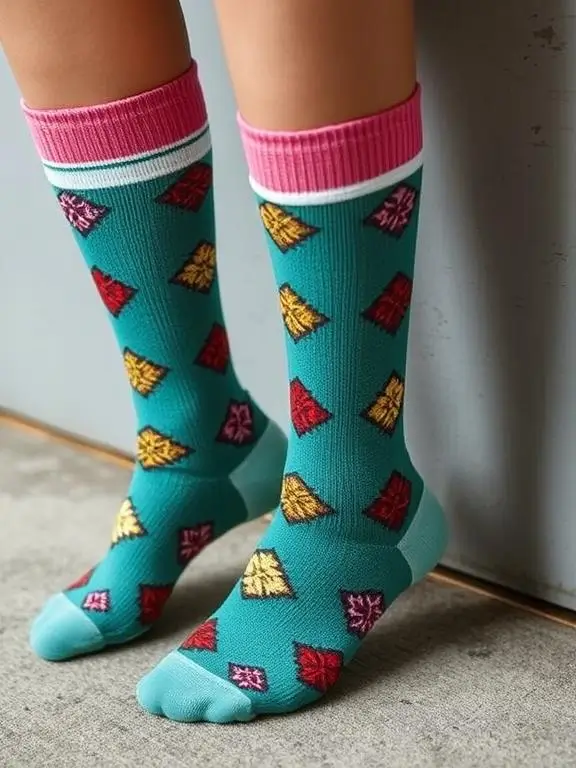
Often overlooked, socks become an intentional part of the outfit.
-
Visible Socks: Worn pulled up with shorts, cropped trousers, or rolled-up jeans. Crew length is standard.
-
Graphic & Logo Socks: Featuring brand logos, patterns, or colors that coordinate with the rest of the outfit or provide a deliberate contrast.
-
Textured Socks: Ribbed, waffle-knit, or athletic-style socks add textural interest.
-
Tie-Dye & Colored Socks: Add pops of color and personality, especially when paired with simpler footwear and clothing.
How to Incorporate 2025 Streetwear Trends into Your Wardrobe
Adopting new streetwear trends should feel authentic and enhance your personal style, not replace it entirely. It is about selective integration rather than a complete overhaul. Here are some tips for incorporating the 2025 trends naturally:
Start Small & Authentically
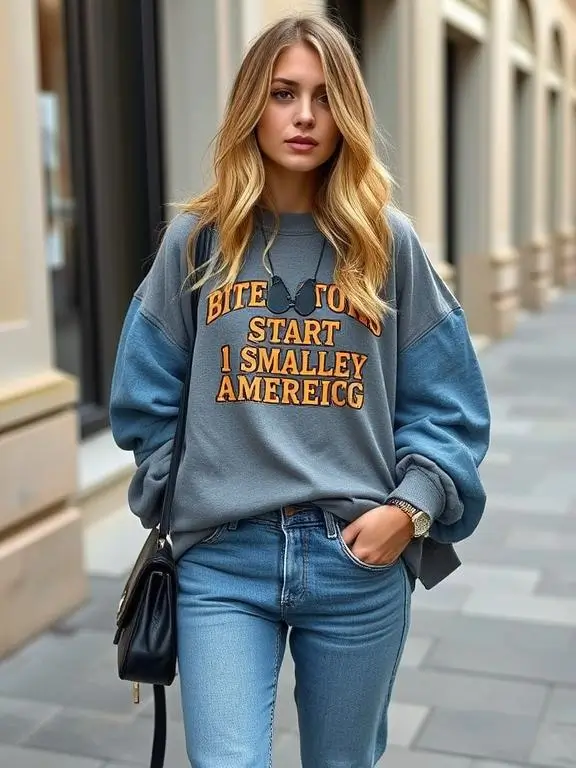
You do not need to adopt every trend head-to-toe. Start with one or two pieces that genuinely appeal to you and fit your existing style. If you like the Neo-Tech Utility look, try a technical shell jacket or a pair of refined cargo pants first. If you are drawn to Elevated Basics, invest in a high-quality hoodie or a perfect-fit tee. Choose items that resonate with your lifestyle and personality. Authenticity is key in streetwear; forcing a trend rarely looks convincing.
Mix High and Low (Price & Style)
Streetwear excels at mixing price points and style influences. Pair an investment piece, like a premium jacket or sought-after sneakers, with more accessible basics like well-fitting jeans and a simple tee. Combine a technical Gorpcore item with a more classic piece, or style Y2K-inspired baggy jeans with a refined minimalist top. This contrast often creates the most interesting and personal looks. Avoid wearing exclusively high-end or exclusively trend-driven items, as this can lack nuance.
Focus on Fit and Silhouette
How clothes fit is arguably more important than the specific item or brand. Pay attention to silhouette – the overall shape your outfit creates. Experiment with proportions. If you are wearing baggy trousers (Y2K trend), consider balancing them with a more fitted or cropped top. If you opt for an oversized hoodie (Elevated Basics), ensure your bottom half provides some structure, perhaps with straight-leg jeans or tailored joggers. Understand how different cuts work on your body type. Even subtle adjustments in fit can make a trend feel more current and flattering.
Experiment with Layers and Textures
Layering is fundamental to streetwear styling and allows for easy integration of new pieces. A utility vest over a hoodie, a technical jacket over knitwear, or a mesh top under a graphic tee can add depth and visual interest. Pay attention to textures as well. Mixing different materials – like smooth technical nylon with soft cotton fleece, or rugged denim with fine knitwear – adds sophistication and dimension to an outfit, even within a monochrome color palette.
Don’t Forget Personal Style
Ultimately, streetwear trends are tools, not rules. Use them to update your look and express yourself, but always filter them through your own unique style perspective. What makes streetwear compelling is the individuality of the wearer. Take inspiration from the trends, adapt them to suit your taste, and combine them in ways that feel right for you. The goal is not to look like everyone else following a trend, but to use the trends to refine and evolve your personal urban fashion statement.
The Future of Streetwear: Beyond 2025
Streetwear will keep absorbing global subcultures, from K-pop to Afro-futurism. Virtual fashion (digital-only clothing) and AI-designed drops will blur physical and digital realms.
Final Thoughts
2025’s streetwear trends celebrate individuality and responsibility. Whether you’re rocking solar-powered accessories or gender-fluid blazers, remember: urban fashion is about owning your story. Stay curious, stay bold, and let your clothes speak for you.
FAQs
-
What is the biggest overall shift in streetwear trends for 2025 compared to previous years?
The biggest shift is arguably the dual focus on both highly functional, tech-inspired utility wear (Neo-Tech Gorpcore) and simultaneously a strong move towards refined, logo-minimal elevated basics. This shows a maturing landscape where both practicality/performance and understated quality/silhouette are highly valued, moving slightly away from the previous dominance of overt branding and loud graphics, alongside the non-negotiable integration of sustainability. -
How important is sustainability in 2025 streetwear trends?
Sustainability is extremely important. It’s less of a distinct aesthetic trend and more of a fundamental principle influencing material choices (recycled, organic, innovative bio-materials), brand transparency, and consumer purchasing decisions across all other trends. Brands ignoring sustainability risk losing relevance, as conscious consumption is a major driver, especially among younger demographics shaping urban fashion. -
Can I still wear logos in 2025, or is that trend completely over?
Logos are not completely over, but the trend is shifting towards subtlety and refinement. While loud logomania is less dominant, discreet branding, heritage logos used thoughtfully, or logos integrated into artistic graphics are still relevant. The “Elevated Basics” trend emphasizes moving beyond logos as the primary focus, prioritizing quality, fit, and material instead, but logos definitely still have a place within other trends like Y2K Remix or within specific brand identities. -
Which single item best represents the merging of different 2025 streetwear trends?
A pair of evolved cargo pants could represent the merging of several trends. They inherently fit the Neo-Tech Utility/Gorpcore theme (functionality, pockets). If made from high-quality, perhaps recycled technical fabric with a refined cut, they touch on Elevated Basics and Sustainability. If designed with a baggy silhouette and perhaps unique pocket details, they could also nod to the Y2K Remix trend. Their versatility allows styling across multiple aesthetics. -
How can I participate in streetwear trends on a budget?
Focus on key silhouettes and styling rather than expensive hype items. Thrift stores and secondhand platforms are great for finding Y2K pieces, retro sneakers, or even quality basics. Invest in one or two versatile, high-quality basics (like a great hoodie or well-fitting jeans) that align with the “Elevated Basics” trend, as these offer longevity. Accessorize intentionally – cool socks, a functional bag, or unique headwear can update an outfit significantly without a huge cost. Mix affordable basics with maybe one trend piece you find secondhand or on sale.

